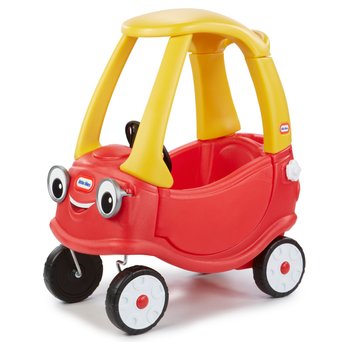Great Reasons On Deciding On Kids Ride On Cars
Wiki Article
What Do I Need To Be Aware Of About The Battery's Life And The Charging Time Of An Electric Ride-On The Kids' Car?
Knowing the battery's life and charging times of an electric ride-on children' car is essential for the safety of your children and optimum performance. Here's what you should know - Battery Type -
Children's electric cars can be recharged, and usually utilize lithium-ion battery or lead-acid battery. Lithium ion batteries offer longer battery life than lead-acid batteries and charge more quickly.
Capacity of Battery
The operating duration of the ride-on vehicle is determined by the battery's capacity. It is measured in amp-hours or Watt-hours. Batteries with high capacity allow for longer playtime without requiring recharge.
Run Time -
The run-time of an electrical ride-on car refers how long it can run continuously on one charge. This can vary depending on a variety of factors, including battery's capacity, motor's power, terrain, and weight of the person riding.
The average run time for electric ride-on vehicles is between 30 minutes and two hours. Batteries with a large capacity can provide an extended run time.
Charging Time
Charging time refers to the amount of time needed for batteries to be fully recharged after it has been exhausted. Charging times may vary depending on the battery's capacity or charger specifications.
Charge times for electric ride on cars are typically between 8-12 hours. Certain models can charge faster, especially those that use lithium-ion batteries.
Follow the charging guidelines that are provided by the manufacturer in order to ensure battery safety and long-term durability. Battery performance can be adversely affected when the battery is charged too high or is undercharged.
Charging Method -
Electric ride-on vehicles are typically equipped with a charger that connects to a standard household outlet. Certain models come with fast-charging capabilities or a smart charging system that monitors battery charge state and adjusts charging rate according to the charge state.
To ensure that the battery is not damaged or electrical system, make sure that the charger and the port of the ride-on are compatible.
Additional Batteries
Certain electric vehicles offer the option of purchasing additional batteries or batteries to extend play time. The availability of extra batteries allows you to switch out batteries that are depleted for fully charged ones, minimizing interruptions between play sessions.
When you know the charging duration and battery life of your electric vehicle for children, your child can enjoy endless hours of play and adventure. The battery performance and life can be extended by constantly charging the batteries and following proper charging methods. View the recommended electric kids cars for more examples including toy cars toy car, ride on digger, race car toy car, electric ride on cars, electric ride along car, two seater electric cars, toy with car, kiddies cars, remote control childrens car, toy ride and more. .

What Is The Reason And How Do Electric Ride-On Cars Accommodate Different Levels Of Expertise?
The majority of electric rides have multiple speed and control settings to accommodate children with different capabilities and offer an enjoyable and safe riding experience. These features are intended for safety and enjoyment.
Different children have different levels of skill and confidence when it comes to driving in ride-on vehicles. The maximum speed of the car's engine can be altered to match the abilities of the child, which lowers the risk of an accident or collision.
Beginners and younger children should use the speed setting that is lower as older kids or those who have more experience are able to use the faster speeds.
Gradual Learning Curve -
With a variety of speed settings The electric ride-on car helps youngsters develop their driving skills gradually. For beginners, it is recommended to start with slower speeds in order to become familiar with the controls prior to increasing to faster speeds.
Parents can help increase the driving speed of their children as they grow more adept at driving. This provides a sense achievement and progress.
Parents Control -
Certain electric ride-on cars include parental control features that allow parents the ability to limit the maximum vehicle speed remotely. Parents will be able to be assured of their safety by using this feature, since they are able to adjust or stop the vehicle at any moment to protect their child.
Depending on the model, parental control options may include speed limits on remotes as well as emergency stop buttons or remote steering options.
Flexibility
The interests and capabilities of children will change as they age and grow. Electric ride-on cars with different speed settings provide flexibility and the ability to adapt to the changes in their needs over time.
As children improve their confidence and competence, they can graduate to higher speed settings for the most thrilling and challenging adventure. In contrast, parents can lower the speed to younger children or those who are less confident.
Customization
Multi-speed settings make it possible to customize and personalize the experience of riding according to the individual's preferences. The speed can be adjusted to suit the child's comfort and level of excitement.
Certain electric ride-on vehicles have additional controls, such as variable acceleration or brake sensitivity. They allow the driving experience to be tailored to specific needs.
Electric ride-on vehicles that have different speed settings and controls features offer a safe and adaptable ride for children of all ages and levels. The features designed for children are intended to promote enjoyment, confidence, and growth in skill while parents still supervise their children and intervene if necessary. Have a look at the recommended go here on Mercedes kids car for blog info including race car toy car, toy with car, remote control childrens electric cars, two seater childrens electric cars, toy car toy car, ride on toy, race car toy car, ride electric car, childrens ride on, electric two seater cars and more. .

What Are The Options For Children's Remote-Controlled Vehicles? What Are The Advantages And Disadvantages Of These Vehicles?
The different sizes, styles of prices, sizes, and styles of remote-controlled cars for children are readily available to meet the needs and budgets of all. Here's an overview of the kinds, sizes, prices as well as pros and cons of remote controlled children's vehicles The types of remote control Children's Cars -
Electric RC Cars – Remote-controlled cars powered by batteries that are suitable for use indoors as well as outdoors. The cars are available in different styles such as buggies and trucks.
Nitro RC Cars - Gas-powered remote-controlled cars that have higher speeds and performance but require more care and experience to operate. These cars are usually larger and are more expensive than electric RC vehicles.
Scale Models - Remote-controlled replicas of real-life vehicle models, which include cars, trucks boats, and airplanes. Scale models come in various scales, ranging from 1 10- to 1-24 inches With larger scales offering more detail and realism.
Sizes -
Remote control cars for children come in a range of sizes, from small miniature models to huge-scale replicas. The weight and size of the car will affect its performance.
Micro-sized vehicles, which are lightweight and compact, are great for use indoors and by younger children. The larger models offer greater performance and endurance, making them suitable for off-roading and racing.
Prices
Prices for remote-controlled kids' cars may vary based on specifications, quality, and brand.
The RC cars that are small-sized and electric range from $20 to $100, while larger-scale nitro and electric RC cars are available between $100 and $500 or more.
Scale models, premium hobby RCs range from a few hundred dollars to over a $1,000 depending on the quality of the model and the performance.
Pros and Cons
Pros -
Adults and kids can both enjoy the fun and excitement of remote-controlled vehicles.
Skills development - Driving an RC car can help children develop their spatial awareness and hand-eye coordination.
Social Interaction: RC cars are great for social interaction with friends and family.
Aftermarket parts including upgrades, accessories, and other products from the aftermarket can be used to modify numerous RC cars and improve their performance.
Cons
Cost - High-quality remote control children's cars can be expensive, especially hobby-grade models with sophisticated features.
Learning Curve – Operating a RC car requires some practice and. Children younger than 10 may struggle to control the controls.
Maintenance: Cars in RC require regular maintenance including cleaning, oiling, and occasionally fixing or replacing parts.
Safety concerns RC cars pose a safety risk and could lead to electrical hazards, accidents and falls if used without supervision of an adult.
Remote control cars for kids provide a fascinating enjoyable and educational experience. But, it's crucial to select the appropriate model based on the factors of dimensions, safety, cost and features. Hobby-grade RC cars are suitable for older children and avid users, whereas simpler models are best for young kids and novices. Read the top electric kids cars kidscars.co.uk recommendations for site tips including toy the car, race car toy, 2 seater electric cars, ride on car, childrens ride on, ride on toy, toy in car, childs car toy, childrens electric ride on, ride on toy and more. .
